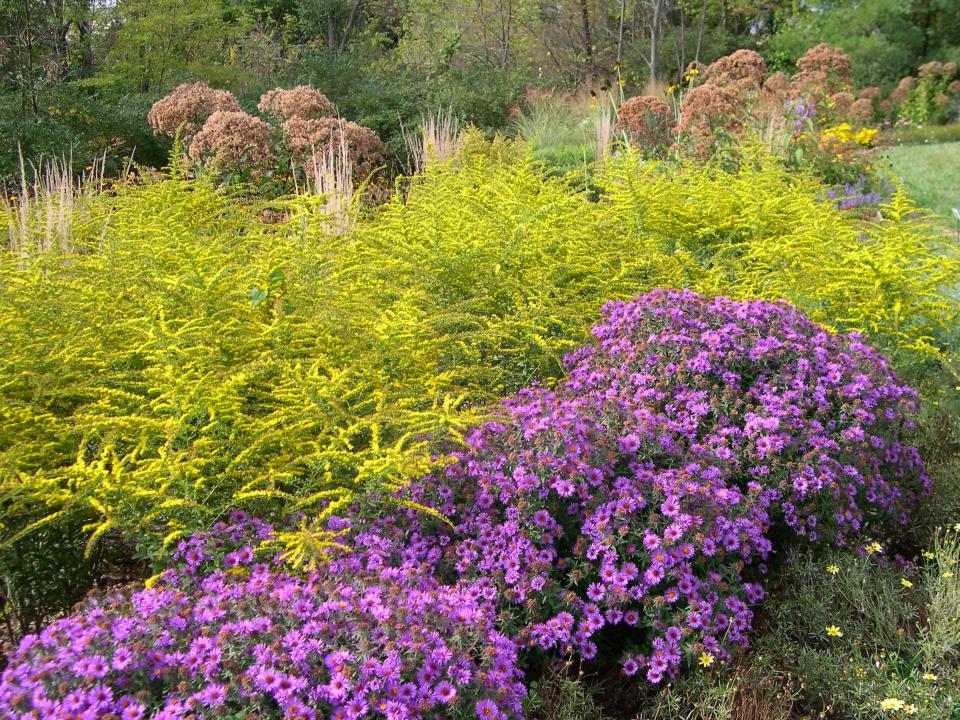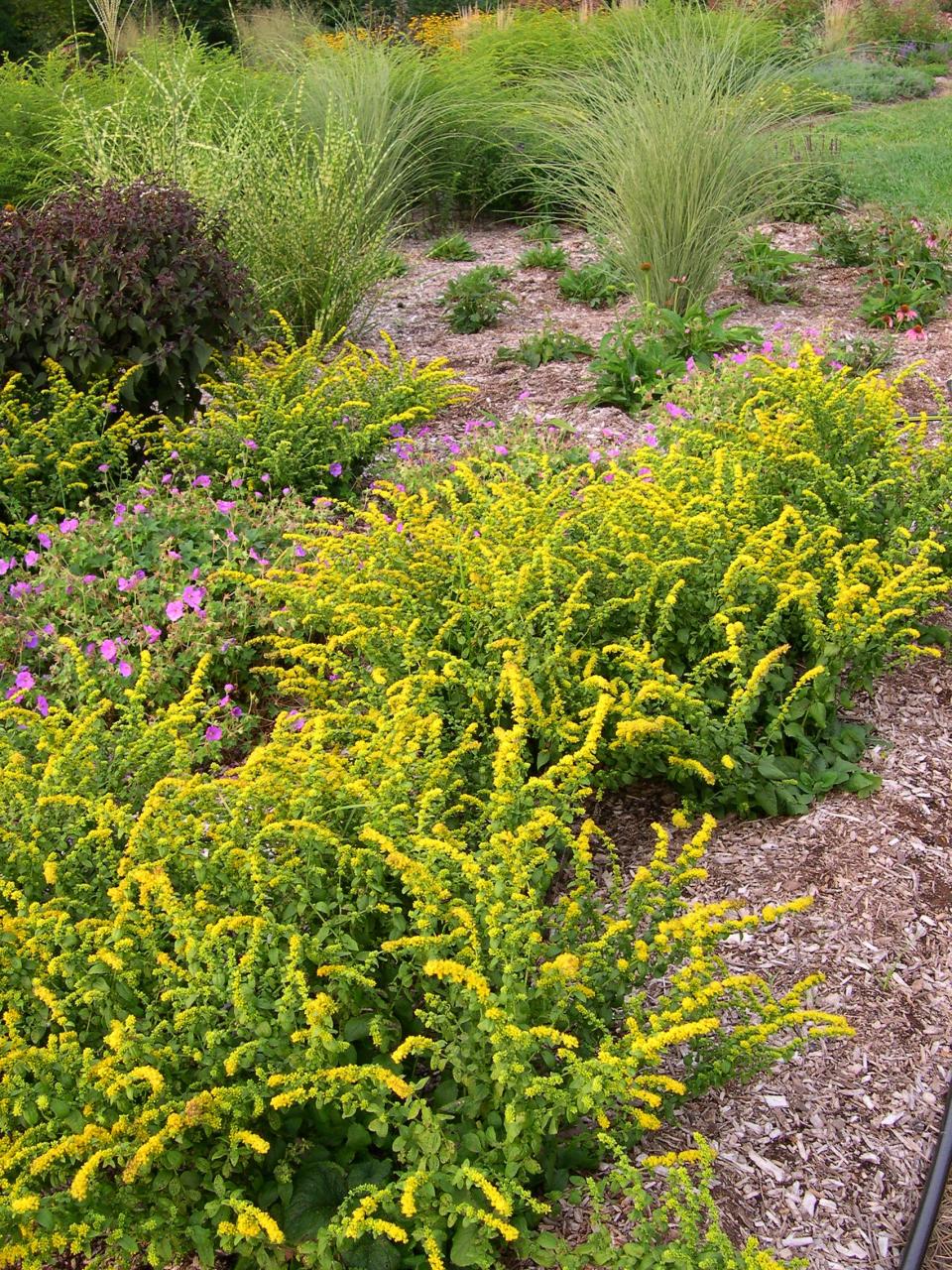Achoo! Here's why goldenrod is not to blame for your pollen allergies

If there ever was a Rodney Dangerfield of the garden plant world, it would be the goldenrod. Down through the generations, it has been blamed for hay fever symptoms experienced by everyone from Myles Standish to David Beckham. Even as recent as my undergraduate soil science class (OK, not that recent), we were taught that the presence of any goldenrod in a field was synonymous with poor soil fertility.
One book even relegated goldenrod to what the author referred to as “poverty pasture.” Goldenrods just don’t get any respect.
But honestly, when it comes right down to it, the only features goldenrods don’t share with Mr. Dangerfield are the drooping jowls and bad jokes!
Goldenrods, and there are about a hundred or so species, are all members of the taxonomic genus Solidago. Most call North America home although there are a few South American species as well as a handful of species native to Europe and Asia. And in an interesting turning of the botanical tables, a few North American species have become somewhat invasive in Europe.
Most goldenrod species are herbaceous perennials that mature at heights ranging between a few inches and a few feet tall. They are generally late-season bloomers, starting to show off their flowers from the middle of summer through late fall. If you are looking for red or orange or Smurf blue ― you’ll want to look elsewhere. Yellow (and rarely, white) is the flower color of choice in the Solidago clan.
In nature, goldenrods serve as some of the most important pollinator-friendly members of the plant kingdom. A single species can play host to scores of different pollinating insects. Several researchers have gone so far as to list Solidago as the single most important genus of plants when it comes to pollinator support.
Beyond the whole pollinator thing, goldenrods are tremendously useful plants. Many can tolerate tremendously hot and dry conditions but there are some species that take reasonably well to slightly shaded and even damp soil conditions. Whether you are designing a garden or planning a native meadow restoration, there’s very likely a long line of goldenrods on your list ― or at least there should be.
But despite their many features and varied history, the one thing that goldenrods do not do … they do not cause so-called hay fever. Most goldenrod species have heavy, sticky pollen. This is not the kind of pollen that erupts in clouds of sulfur yellow, to be inhaled by unsuspecting humans who then run to the pharmacy for a gallon-sized bottle of Sinex spray. As most people know, the late summer instigator of late-season allergic rhinitis is ragweed (Ambrosia artimisiifolia), with its bloom time that overlaps with many goldenrods but does so fully camouflaged in green flowers. Don’t blame the goldenrod!
As a group of garden plants, goldenrods were pretty much totally ignored through the ages. Always considered weeds or invaders of overlooked space. But starting in the 1980s and 1990s, with increasing interest in North American native plants, they started to get a little traction. And since then, they have become, not quite mainstays in the American garden lexicon, but they’re making headway and there are some excellent selections out there.
Following are a few that we have put to excellent use in our plantings at Yew Dell Botanical Gardens.
Solidago rugosa ‘Fireworks’ – rough goldenrod

This is a big and vigorous one for the larger garden. Growing to almost 4 feet tall and wide, it has an upright arching growth habit that gives it a fountain-like shape. Fine in texture, they spend most of the growing season as a stiffly graceful mass of deep green. Then, in late summer they ignite to their full-on, bright yellow bloom for several weeks. Full sun, medium soil, and plenty of space are all they need.
Solidago shortii, ‘Solar Cascade’ – Short’s goldenrod

This is one we almost lost for good. In fact, it is still listed as a critically endangered species.
Originally documented near the Falls of the Ohio State Park, just across the Ohio River from Louisville, this lower growing, one might even say “cascading,” species only exists on a handful of sites in central Kentucky and southern Indiana. Named for Dr. Charles Wilkins Short of Louisville who, first described the species on Rock Island, which has since been subsumed by the construction of the McAlpine Locks, it was actually considered extinct before it was rediscovered around 1940.
This species grows to about 2.5 feet tall with a broad, sprawling growth habit. And it is that habit, combined with the late summer blooms that caught the gardener’s eye of our friends at the Cincinnati Zoo and Botanical Garden. They grew a crop of seedlings and picked out one with a particularly good shape. It is commercially propagated by cutting (to maintain the integrity of the original selection) and is available from nurseries across the US. We like to grow it above a retaining wall or on a slope to let the cascading habit do its thing.
Solidago sphacelata ‘Golden Fleece’ – Autumn Goldenrod

For a more diminutive selection, this one makes a great addition to the garden. Topping out at just about a foot tall and a bit more in width, ‘Golden Fleece’ produces huge quantities of bright yellow blooms in August and September set off by bright green foliage that looks a bit like Bib lettuce.
Now, for the “this is completely weird” back story on goldenrod. It seems that Thomas Edison, the old tinkerer himself, actually did some work with goldenrod as a source for commercial rubber — some species have an amazingly high rubber content in their leaves. In fact, while I’ve not been able to independently confirm this, it is said that his friend Henry Ford gifted Edison a Model-T with tires made of rubber from goldenrod after Edison spent a few years refining the cultivation conditions to maximize goldenrod rubber content!
Makes you want to give the poor goldenrods a little more respect.
Paul Cappiello is the executive director at Yew Dell Botanical Gardens, 6220 Old Lagrange Road, yewdellgardens.org.
This article originally appeared on Louisville Courier Journal: Why goldenrod is not to lame for pollen allergies